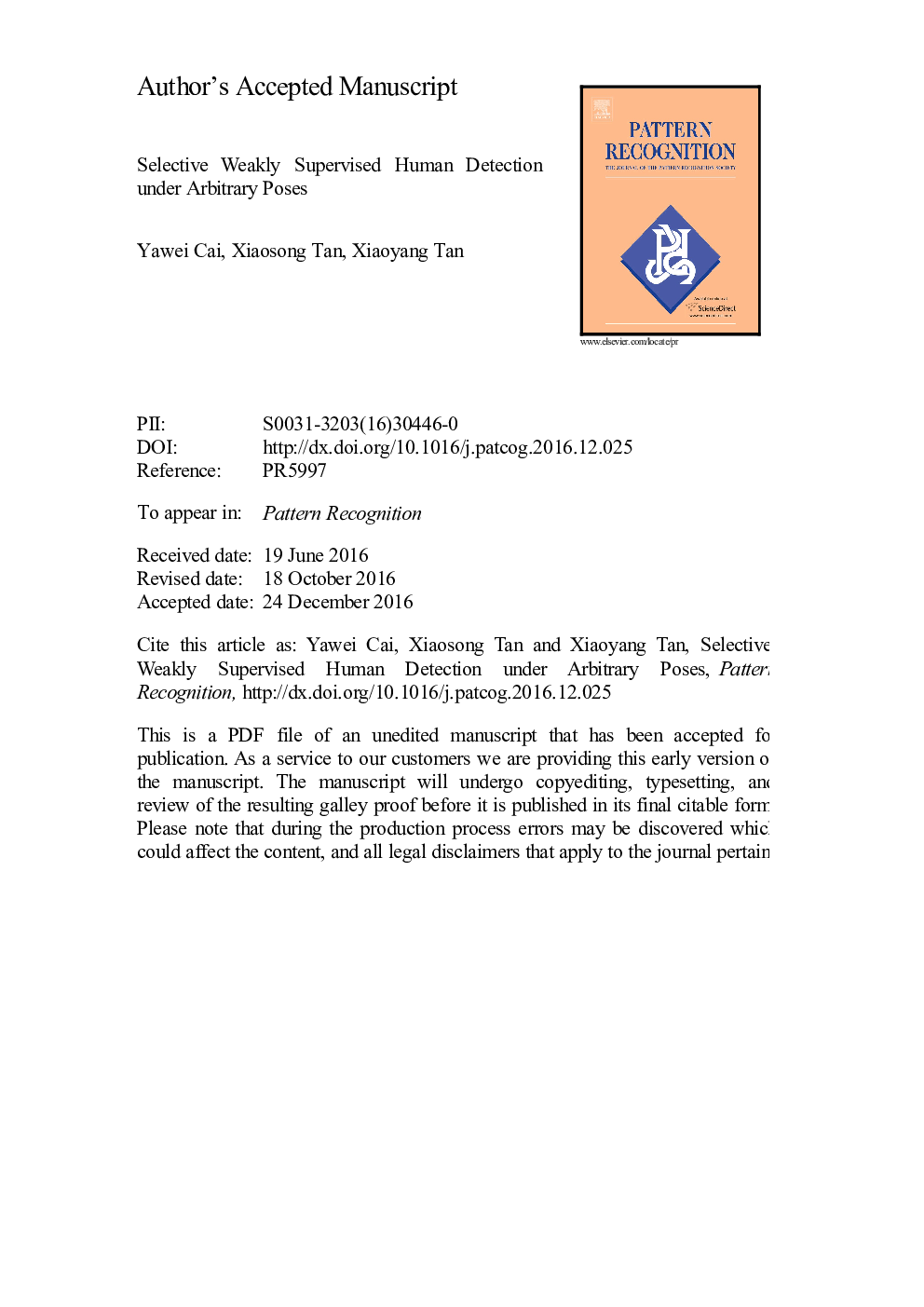| Article ID | Journal | Published Year | Pages | File Type |
|---|---|---|---|---|
| 4969657 | Pattern Recognition | 2017 | 39 Pages |
Abstract
In this paper we study the problem of weakly supervised human detection under arbitrary poses within the framework of multi-instance learning (MIL). Our contributions are threefold: (1) we first show that in the context of weakly supervised learning, some commonly used bagging tools in MIL such as the Noisy-OR model or the ISR model tend to suffer from the problem of gradient magnitude reduction when the initial instance-level detector is weak and/or when there exist large number of negative proposals, resulting in extremely inefficient use of training examples. We hence advocate the use of more robust and simple max-pooling rule or average rule under such circumstances; (2) we propose a new Selective Weakly Supervised Detection (SWSD) algorithm, which is shown to outperform several previous state-of-the-art weakly supervised methods; (3) finally, we identify several crucial factors that may significantly influence the performance, such as the usefulness of a small amount of supervision information, the need of relatively higher RoP (Ratio of Positive Instances), and so on - these factors are shown to benefit the MIL-based weakly supervised detector but are less studied in the previous literature. We also annotate a new large-scale data set called LSP/MPII-MPHB (Multiple Poses Human Body), in which and another popular benchmark dataset we demonstrate the superiority of the proposed method compared to several previous state-of-the-art methods.
Related Topics
Physical Sciences and Engineering
Computer Science
Computer Vision and Pattern Recognition
Authors
Yawei Cai, Xiaosong Tan, Xiaoyang Tan,
